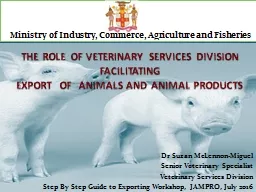PDF-American Journal of Animal and Veterinary Sciences 6 2 6972 2011
Author : piper | Published Date : 2022-10-12
69Clinical Signs of Hairballs in Cats Fed a Diet Enriched with CelluloseAC Beynen J Middelkoop and DHJ SarisVobra Special Petfoods BV Veghel Netherlands University
Presentation Embed Code
Download Presentation
Download Presentation The PPT/PDF document "American Journal of Animal and Veterinar..." is the property of its rightful owner. Permission is granted to download and print the materials on this website for personal, non-commercial use only, and to display it on your personal computer provided you do not modify the materials and that you retain all copyright notices contained in the materials. By downloading content from our website, you accept the terms of this agreement.
American Journal of Animal and Veterinary Sciences 6 2 6972 2011: Transcript
Download Rules Of Document
"American Journal of Animal and Veterinary Sciences 6 2 6972 2011"The content belongs to its owner. You may download and print it for personal use, without modification, and keep all copyright notices. By downloading, you agree to these terms.
Related Documents














